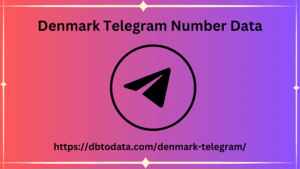Post by amirmukaddas on Mar 12, 2024 6:40:11 GMT
Google's attention to the mobile universe is particularly morbid . If only for the increasing number of users who browse from smartphones or tablets compared to the past. Already at the end of 2015, mobile searches surpassed desktop ones. Also very interesting is the prediction from Gary Illyes , Webmaster Trends Analyst at Google, according to which in the not too distant future a specific index will be launched for mobile devices and will be favored over the desktop one. Having said that, let's see what the guidelines specify in this regard. This image offers us a summary of everything that, according to Google, a user can search for (or do) with their smartphone. What a user can do with their smartphone Google also tells us that both the query and the user's search intentions can be very different if performed with a mobile device. Precisely for this reason it places emphasis on some very important concepts. User Location : the place from which the search is done.
Local : considers not only the location but also the language the user is assumed to speak. Understanding these two points is essential to correctly interpret the query and user intent. I'll show you right away why I say this thanks to the following image. User intent As you can see, the query "football" takes on totally different meanings depending on whether it is typed in England or the USA. Even though the same language is spoken in these places. As if that weren't enough, toric momentum and queries with multiple meanings can also increase the level of confusion and Denmark Telegram Number Data uncertainty . Imagine you want to search for information on Apple, a well-known telephone manufacturing company. Well, now imagine being the same (American) user who wants to know more about the apple, understood as a fruit. But it didn't end here. Look'. Queries with multiple meanings Likewise if you are typing the keyword Iphone right now perhaps you are looking for news on the Iphone 7; if instead you had done it in 2007 you wanted to discover the legendary iPhone 1.

Without going into too much detail, you must keep in mind that there are 4 types of queries , corresponding to as many methods of interaction between the user and his mobile device. Query Know . When the user searches for information about something Query Do . When the user wants the phone to do an operation Query Website . When the user wants to visit a specific website or a specific page Query Visit in person . When the user wants to physically go to a nearby place and searches for information about it. Finally, consider that the types just listed are not always clearly defined at the time of typing. Therefore, responding to the user's needs correctly also means offering him a double solution when he searches for, for example, "San Siro stadium" . On the one hand, you might want to know how big it is, how many seats there are, etc.; while on the other hand you may simply need directions to get there.
Local : considers not only the location but also the language the user is assumed to speak. Understanding these two points is essential to correctly interpret the query and user intent. I'll show you right away why I say this thanks to the following image. User intent As you can see, the query "football" takes on totally different meanings depending on whether it is typed in England or the USA. Even though the same language is spoken in these places. As if that weren't enough, toric momentum and queries with multiple meanings can also increase the level of confusion and Denmark Telegram Number Data uncertainty . Imagine you want to search for information on Apple, a well-known telephone manufacturing company. Well, now imagine being the same (American) user who wants to know more about the apple, understood as a fruit. But it didn't end here. Look'. Queries with multiple meanings Likewise if you are typing the keyword Iphone right now perhaps you are looking for news on the Iphone 7; if instead you had done it in 2007 you wanted to discover the legendary iPhone 1.

Without going into too much detail, you must keep in mind that there are 4 types of queries , corresponding to as many methods of interaction between the user and his mobile device. Query Know . When the user searches for information about something Query Do . When the user wants the phone to do an operation Query Website . When the user wants to visit a specific website or a specific page Query Visit in person . When the user wants to physically go to a nearby place and searches for information about it. Finally, consider that the types just listed are not always clearly defined at the time of typing. Therefore, responding to the user's needs correctly also means offering him a double solution when he searches for, for example, "San Siro stadium" . On the one hand, you might want to know how big it is, how many seats there are, etc.; while on the other hand you may simply need directions to get there.







